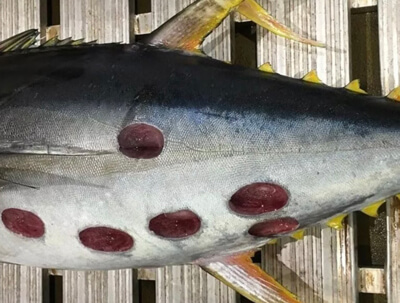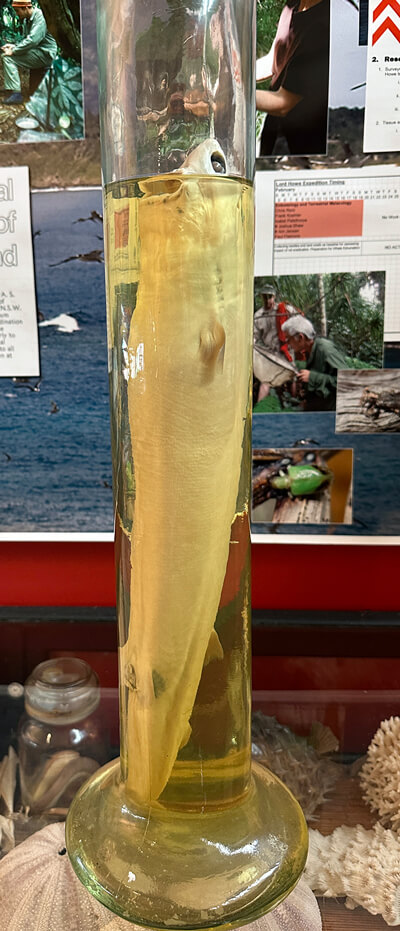One of the unusual exhibits in the Environmental Gallery that gets a lot of questions is a tall glass jar containing a small shark, just 40cm long.
This small shark is called the Cookie-cutter shark (Isitius brasiliensis).
These sharks inhabit warm oceans around the world; however, they live in mid to deep waters and specimens are quite rare. During the day they can descend to a depth of 3.7 kilometres, and they migrate vertically at night to feed near the surface, and then descend to depths again at dawn.
This specimen was washed up on North Beach, here on Lord Howe Island.



The Cookie-cutter shark has an unusual method of attack
They feed with a variety of methods, the most bizarre being to bite large chunks out of the body of marine fish and mammals, usually weak or injured animals. Often fish caught on long lines, where the fish may be dangling for some time, will get Cookie cutter bites.
Their method of attack is to latch onto the under surface of their prey using highly specialised suctorial lips. The bottom of their mouth houses a series of saw-like teeth arranged in an arc. While sucking onto the surface with the upper mouth, they bite into the flesh with the bottom jaw. Then, with a twisting motion, they swivel around and complete a circular plug, that is pulled away, cradled in the scoop-like lower jaw, while held by the hook-like upper teeth. Thus, leaving a plug-like hole in the body of the victim.
The name Cookie Cutter derives from the similarity of the wound to the old-fashioned method of biscuit making using a round tin device to cut out biscuits – leaving circular shapes in the rolled pastry.
Further reading
The cookiecutter shark
Wikipedia
Smalltooth Cookiecutter Shark
Australian Museum website






